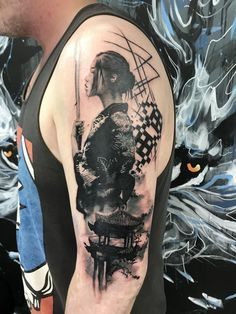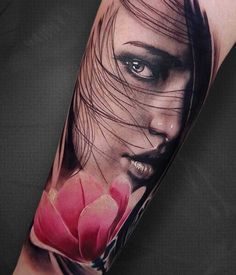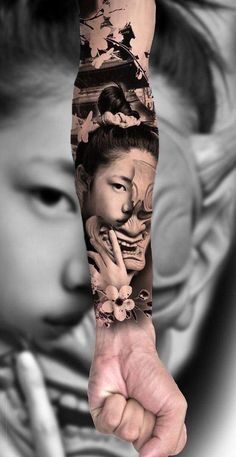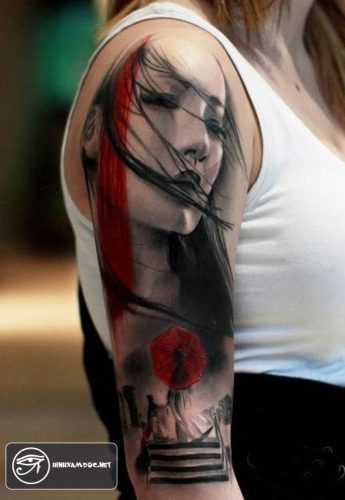
In the world of body art, the Japanese geisha tattoo stands as a captivating and timeless masterpiece, enchanting enthusiasts with its intricate designs and cultural significance. From the delicate details to the rich symbolism, the allure of the geisha tattoo is undeniable. This article delves into the mesmerizing world of Japanese geisha tattoos, exploring their history, symbolism, and enduring appeal.
The Cultural Significance of Geisha Tattoos

Geisha tattoos hold profound cultural significance rooted in Japan’s rich history and traditions. Geishas, historically known as skilled entertainers trained in various Japanese arts such as dance, music, and tea ceremony, symbolize grace, elegance, and refined beauty. Their mystique and allure have fascinated people worldwide for centuries, making them a popular motif in Japanese tattoo art.
Geisha tattoos often depict these iconic figures adorned in elaborate traditional attire, including vibrant kimonos, intricate hairstyles, and ornate accessories. Each element of the tattoo carries symbolic meaning, reflecting aspects of Japanese culture, mythology, and spirituality.
Symbolism in Geisha Tattoos
The symbolism embedded within geisha tattoos adds depth and meaning to their aesthetic appeal. Here are some common motifs and their interpretations:

- Cherry Blossoms: A prevalent symbol in Japanese culture, cherry blossoms represent the fleeting nature of life and the beauty of transience. In geisha tattoos, cherry blossoms often accompany the figure, emphasizing the ephemeral nature of beauty and the passage of time.
- Koi Fish: Symbolizing perseverance, determination, and good fortune, koi fish are another popular element in geisha tattoos. Often depicted swimming upstream against strong currents, koi embody the spirit of overcoming adversity and achieving success.
- Fans and Umbrellas: Geishas are often portrayed holding fans or umbrellas, both of which symbolize elegance, sophistication, and grace. These accessories accentuate the geisha’s poise and refinement, adding to the tattoo’s aesthetic appeal.
- Dragons: In Japanese mythology, dragons are revered creatures symbolizing power, wisdom, and protection. When incorporated into geisha tattoos, dragons convey strength and authority, complementing the geisha’s femininity with a touch of fierceness.
- Peonies: Known as the “king of flowers” in Japanese culture, peonies symbolize wealth, prosperity, and honor. In geisha tattoos, peonies often adorn the background or frame the figure, symbolizing beauty, prosperity, and good fortune.
- Waves and Mount Fuji: Depicting the natural landscapes of Japan, waves and Mount Fuji symbolize the beauty and majesty of the country’s scenery. These elements evoke a sense of nostalgia and national pride, connecting the geisha to her cultural heritage.
Enduring Appeal of Geisha Tattoos

Despite evolving trends in tattoo art, geisha tattoos remain a timeless and coveted choice for enthusiasts worldwide. Their exquisite beauty, intricate designs, and profound symbolism continue to captivate admirers, transcending cultural boundaries and inspiring awe and admiration.
Moreover, geisha tattoos serve as a tribute to Japanese culture and heritage, preserving traditional art forms and celebrating the enduring legacy of these iconic figures. Whether adorned as a standalone piece or integrated into larger compositions, geisha tattoos exude elegance, sophistication, and timeless allure, making them a cherished symbol of beauty and grace.

In conclusion, Japanese geisha tattoos encapsulate the essence of timeless beauty and cultural symbolism, captivating enthusiasts with their mesmerizing designs and profound meanings. As enduring symbols of grace, elegance, and refinement, geisha tattoos continue to fascinate and inspire, embodying the rich heritage and artistic legacy of Japan’s illustrious past.





